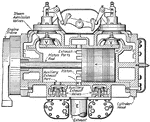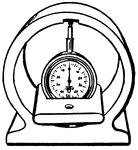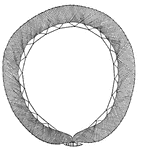
Purse-seine
A 'purse' seine is a form of fishing net that is paid out around a school of fish, like a cylinder with…
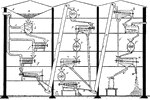
Modern Flour Mill
This illustration shows a cross-section of a modern flour mill. Wheat is received in bin a, and first…

Vertical Type Motor, Six Cylinder
This illustration shows a six cylinder motor and its many parts: Intake Manifold, Centrifugal Pump,…
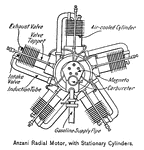
Anzani Radial Motor, with Stationary Cylinders
This illustration shows an Anzani Radial Motor with stationary cylinders and its many parts: Exhaust…
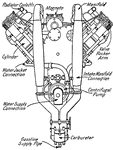
V Type Motor, with Eight Cylinders
This illustration shows a V type motor with eight cylinders, fans, and many other parts: Gasoline Supply…

Gnome Motor, with Revolving Cylinders
This illustration shows a Gnome motor with revolving cylinders and its many parts: Spark Plug; Conducting…

Gabion
A gabion is an open cylinder made of brushwood, canvas, wire-netting, or iron bands used in fortification.…

Glass Blowing and Stretching
In making sheet glass, a very large lump of molten glass is gathered on the rod as is shown at (a).…

Carding Process in the Manufacuring of Jute
After the softening process in the manufacturing of jute, the fibers are about six feet long, and are…

Reaction Wheel
Illustrating the principle of the reaction wheel. (Shows a cylinder-gate, horizontal-type turbine mounted…
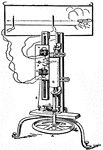
Bashforth Chronograph
Bashforth Chronograph. A, flywheel turning cylinder B on which the record is marked; C, toothed wheel…

Sand Pump
"1. In rope-drilling, a cylinder, provided with a valve at the bottom, which is lowered into the drill-hole…
